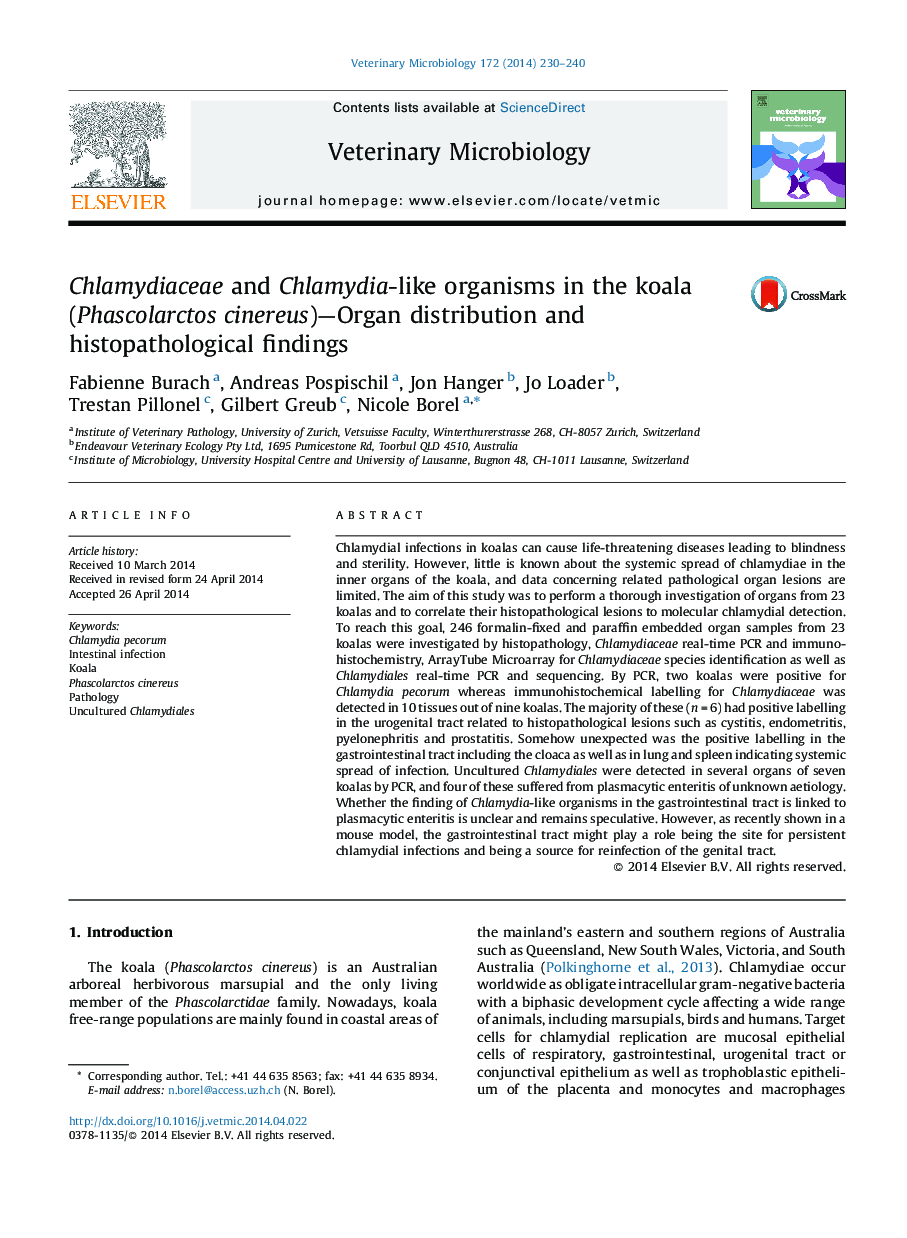| Article ID | Journal | Published Year | Pages | File Type |
|---|---|---|---|---|
| 5800832 | Veterinary Microbiology | 2014 | 11 Pages |
â¢Chlamydial infections in the koala are related to urogenital infections.â¢Chlamydia can spread systemically in the inner organs of the koala.â¢Chlamydiales might be associated with plasmacytic enteritis.â¢The GI tract of the koala might be reservoir for persistent chlamydial infections.
Chlamydial infections in koalas can cause life-threatening diseases leading to blindness and sterility. However, little is known about the systemic spread of chlamydiae in the inner organs of the koala, and data concerning related pathological organ lesions are limited. The aim of this study was to perform a thorough investigation of organs from 23 koalas and to correlate their histopathological lesions to molecular chlamydial detection. To reach this goal, 246 formalin-fixed and paraffin embedded organ samples from 23 koalas were investigated by histopathology, Chlamydiaceae real-time PCR and immunohistochemistry, ArrayTube Microarray for Chlamydiaceae species identification as well as Chlamydiales real-time PCR and sequencing. By PCR, two koalas were positive for Chlamydia pecorum whereas immunohistochemical labelling for Chlamydiaceae was detected in 10 tissues out of nine koalas. The majority of these (n = 6) had positive labelling in the urogenital tract related to histopathological lesions such as cystitis, endometritis, pyelonephritis and prostatitis. Somehow unexpected was the positive labelling in the gastrointestinal tract including the cloaca as well as in lung and spleen indicating systemic spread of infection. Uncultured Chlamydiales were detected in several organs of seven koalas by PCR, and four of these suffered from plasmacytic enteritis of unknown aetiology. Whether the finding of Chlamydia-like organisms in the gastrointestinal tract is linked to plasmacytic enteritis is unclear and remains speculative. However, as recently shown in a mouse model, the gastrointestinal tract might play a role being the site for persistent chlamydial infections and being a source for reinfection of the genital tract.
